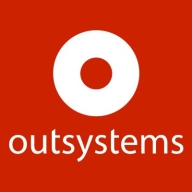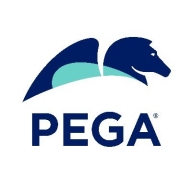

Pega Platform and OutSystems compete in the application development and automation space. Pega Platform seems to have an advantage due to its comprehensive enterprise-level features, making it ideal for complex workflows, while OutSystems excels in ease of use and rapid application deployment.
Features: Pega Platform stands out with case management, BPM, and service orchestration, all integrated into a unified, no-code environment that fosters rapid application development and enterprise-scale process automation. Its strength lies in handling complex workflows. OutSystems is renowned for its visual modeling capabilities, offering a flexible environment for fast prototyping and drag-and-drop functionality. Its strong support for web and mobile application delivery, coupled with seamless integration capabilities, enhances user-friendliness for both technical and non-technical users.
Room for Improvement: Pega Platform has challenges with its high pricing model and licensing costs, which are seen as prohibitive for small to medium enterprises. Additionally, there is room to improve its AI integration, scalability, and cloud presence. OutSystems faces criticism for its high costs, particularly for small businesses, and lacks advanced automation features and reporting capabilities. Both platforms could benefit from enhancements in architecture management and increased AI integration.
Ease of Deployment and Customer Service: Both platforms offer various deployment options, including on-premises, public, and hybrid cloud setups. Pega is often commended for its strong technical support and valuable community resources, although response times might vary with complex issues. OutSystems offers a user-friendly deployment but needs to improve its support responsiveness.
Pricing and ROI: Pega Platform's licensing is expensive, especially for smaller companies, but the extensive features provide a good return on investment for large enterprises. It excels in enterprise-level process automation. Despite being costly, OutSystems offers quick turnaround on development, which can lead to high ROI for significant projects. Both platforms demand substantial initial investments, but Pega suits large-scale operations, while OutSystems balances cost with rapid development benefits.
Developing that same project in OutSystems can be completed in around 40 to 50% less time, requiring only six resources.
Many helpful videos and documentation are available on the OutSystems site, making it relatively easy to learn the platform.
The technical support from Pega is very low, rating a one or two out of ten.
I never needed support from the platform standpoint, but if additional features are required, we have regular meetings with the product team for feedback.
Pega's technical support team is very helpful.
They can be deployed vertically and horizontally, supporting as many deployments as needed.
Currently, big banking providers and insurance providers, even the members for healthcare payers, are using more than millions of operations on a daily or weekly basis.
It is crucial to be aware of which module corresponds to which application in real-time projects, as there are multiple applications.
I would like to see more integration between the use of artificial intelligence to speed up the process delivery time.
What I would like to see is more servicing business analysts in the next release of OutSystems.
With the recent development of AI agents in Pega Platform 24.2, the adoption is not heavy due to regulations around using external LLM by customers, especially regulated customers in BFSS and healthcare.
Pega introduced Constellation, which allows a user to build a more engaging visual experience.
My learning curve in robotics has been challenging.
Subsequent users can be added at an additional cost per user; exact pricing details can be found on the OutSystems site.
The pricing is expensive, and this is an issue.
Pega is priced higher than open-source options like Flowable but is suitable for large-scale industries like banking and insurance.
From a licensing perspective, it is higher than the competition.
OutSystems offers a lot of reusable components and solutions that I can simply drag and drop and use, which has a significant impact on project delivery time.
OutSystems has a very good learning curve for developers.
I have recommended it in situations where very rigid enterprise structures are blocking them from being agile.
Pega Platform is excellent for enterprise-level solutions with integrations to entire systems, including case management, service orchestration, CRM, decision-making capabilities, digital process automation, and AI-driven functionalities.
Management capabilities such as dashboards.
| Product | Market Share (%) |
|---|---|
| OutSystems | 6.1% |
| Pega Platform | 6.8% |
| Other | 87.1% |


| Company Size | Count |
|---|---|
| Small Business | 18 |
| Midsize Enterprise | 7 |
| Large Enterprise | 29 |
| Company Size | Count |
|---|---|
| Small Business | 9 |
| Midsize Enterprise | 15 |
| Large Enterprise | 68 |
OutSystems is a platform for low-code application development that unites design, code, and deployment to simplify development so any business can create innovative solutions in a timely manner. There are various use cases an organization can employ with OutSystems, including:
OutSystems offers faster development and deployment times than hand-coding while delivering unique and personalized solutions to its customers. The main focus of OutSystems is high-performance low code which enables businesses to create functional products that answer their needs. It offers clients the ability to develop enterprise-grade applications with a high level of security.
The product stands out from its competitors as it offers:
It ensures its clients that the applications built using this platform are as scalable as hand-coded ones while increasing workspace productivity and evolving applications’ capabilities.
OutSystems Features
OutSystems has various features through which users can develop and deploy highly efficient applications and other products. Some of the features include:
OutSystems Benefits
The solution offers a wide array of benefits to companies that utilize it in their application development. Some of these benefits include:
Reviews from Real Users
Harikrishnan R., a technical lead at Netlink Software Group America Inc, likes OutSystems because the tool helps with validation, offers good features, and is reliable.
An owner at a consultancy thinks OutSystems is versatile with great scalability and great technical support.
Pega Platform provides flexible business process management with a focus on rapid application development and automation through a low-code approach, enhancing efficiency across sectors.
Pega Platform is renowned for its ability to streamline operations with robust automation features, including robotic process automation and decision-making capabilities. Its intuitive interface and workflow management contribute to a reputation for enhancing business processes. Although users face challenges with integration limitations and high licensing costs, they benefit from rapid deployment and efficient process adaptations. The unified architecture reduces complexity, while case management and integration services support digital transformations in sectors such as banking, insurance, and healthcare.
What are the key features of Pega Platform?In industries like insurance, banking, healthcare, and government, Pega Platform is implemented to automate diverse workflows, supporting initiatives from claims processing to customer onboarding. Enterprises use Pega for case management and digital transformations, valuing its out-of-the-box integrations and real-time reporting capabilities to boost operational automation and enhance customer experiences.
We monitor all Rapid Application Development Software reviews to prevent fraudulent reviews and keep review quality high. We do not post reviews by company employees or direct competitors. We validate each review for authenticity via cross-reference with LinkedIn, and personal follow-up with the reviewer when necessary.